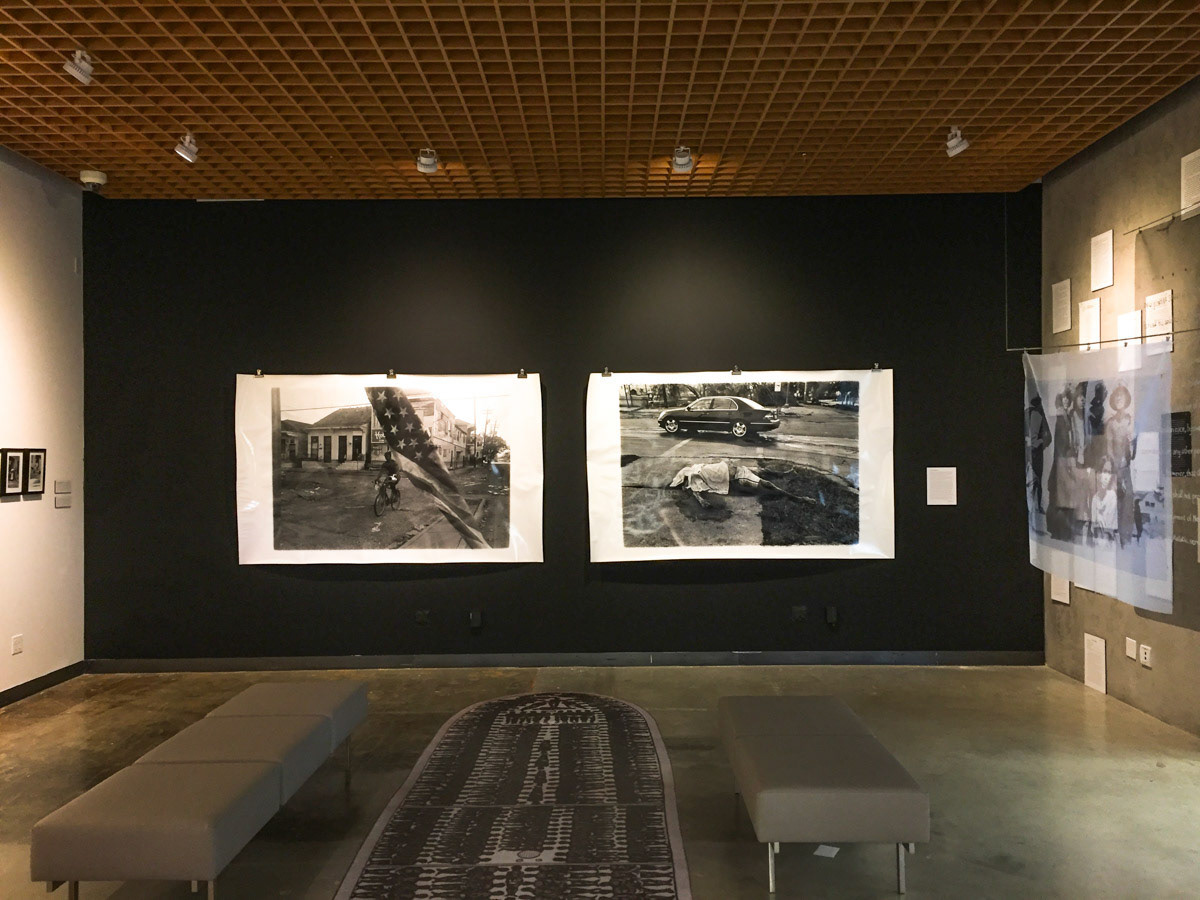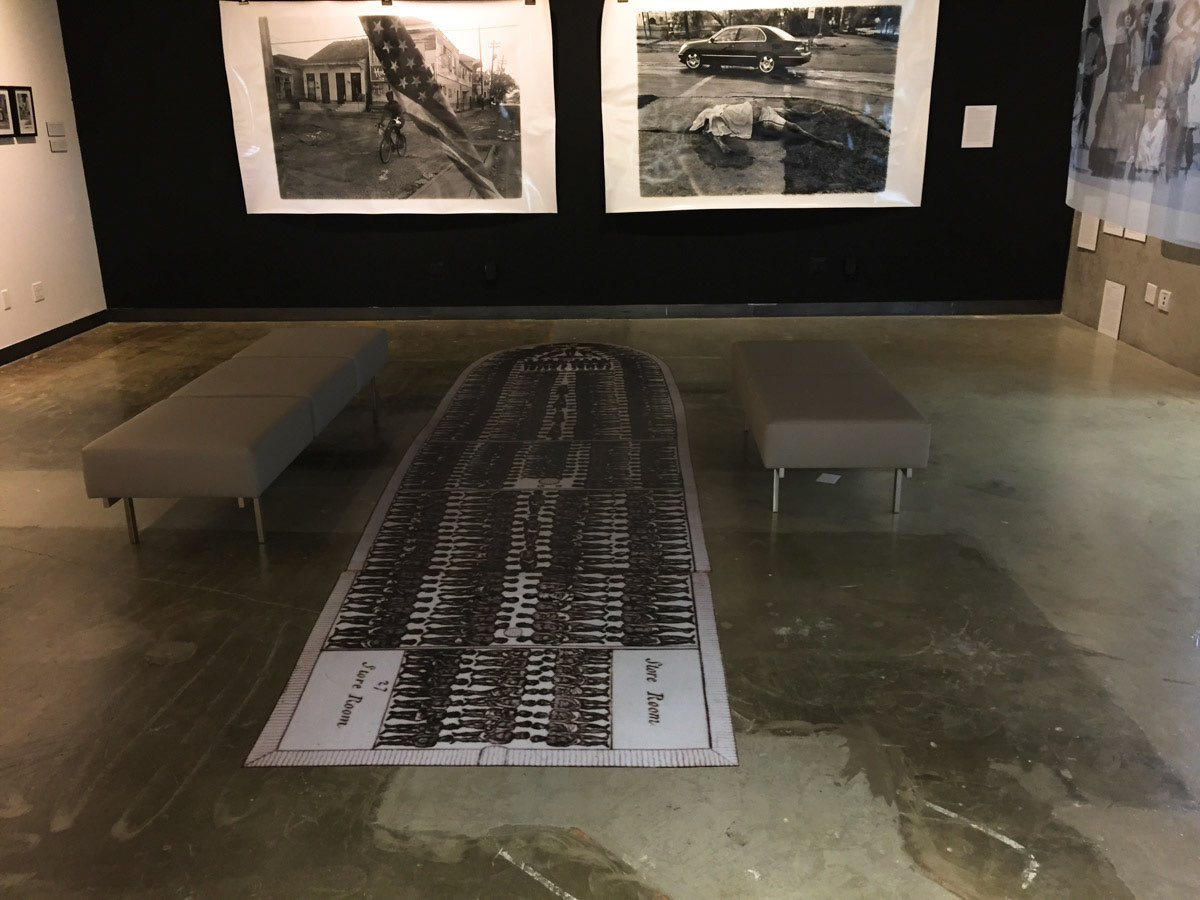ReflectSpace Gallery
Downtown Central Library, Glendale
Sept 15 - Nov 5, 2017
Downtown Central Library, Glendale
Sept 15 - Nov 5, 2017
Artists
Clarence Williams
Nicola Goode
Clarence Williams
Nicola Goode
Archives
Library of Congress
University of Southern California
National Archives
University of North Carolina
Archives
Library of Congress
University of Southern California
National Archives
University of North Carolina
Curated by Ara & Anahid Oshagan







ReflectSpace at Downtown Central presents Wake, an exhibition tracing a jagged narrative of slavery in the US from the slave trade to the present. Revolving around the ideas of Black scholar and author Christina Sharpe, Wake engages various meanings of that word to address the aftermath and the evolution of the institution of slavery into its virulent forms today. The exhibition runs from September 15 to November 5, 2017. Opening reception is on Friday, September 15 from 6 to 8 pm. Wake is curated by Ara and Anahid Oshagan.
The notion of wake has myriad layers of meaning: it is the distortions in the aftermath of a ship’s passing and the ruptures that persist long after its passing; an attendance and a witnessing of the dead, a kind of final act of caring; the state of rising out of sleep to move and act--being present today and now. Wake cuts both ways: into death as well as life.
W hat is the “wake” of the estimated 350,000 slave ships that crossed the Atlantic? “I talk about ‘wake work’”, says Christina Sharpe. “The wake is keeping track of the ship, keeping watch for the dead. It was a way for me to think about the persistence of Black death and the persistence of Black life, the ways in which Black people nonetheless make spaces of joy. ‘Wake work’ is the work that we Black people do in the face of our ongoing death, and the ways we insist life into the present.”
Anchored by the works of Pulitzer-prize winning photographer Clarence Williams and photographer and installation artist Nicola Goode, Wake reflects on Sharpe’s ideas and traces a non-linear narrative of slavery from various points of view.
Williams was in New Orleans for a wedding when hurricane Katrina struck. Rescued from atop a house, Williams stayed to be a witness and document the destruction of Black communities there: a Black death due to long-term government neglect and horrific abandonment of Black citizenry in a time of dire need. Williams presents his work as large-scale, fiber-base photographic prints, made by master printer Andrew Hall.
Nicola Goode, employing archival images, documents and photographs, re-configures and presents her Black family history over three generations in the Los Angeles area while addressing issues of exclusion and marginalization. Goode’s work, which is part image, part installation, part ephemera, is about life which inspired the great migration West and how Blacks in the aftermath of slavery’s legacy have navigated and negotiated limits placed on their “freedom.” Her work touches upon what Sharpe calls “Black life”: an “insistence” of life into the present and recognizes that survival in the aftermath of slavery’s legacy depends on the preservation and celebration of life.
Alongside artwork, Wake presents digitally reproduced archival material as artifact: series of documents and images that stitch together a narrative of the “afterlife” of slavery in multiple contexts to complete and complement Williams’ and Goode’s works. Casting a wide net across space and time, Wake re-appropriates various actual and online archives to generate this narrative. It mines the archival collections at Glendale’s Downtown Central Library and the online collections of the Library of Congress, the National Archives and various universities. Included in the exhibit are reproductions of documents, photographs and audio material from “Born in Slavery” collection, runaway slave ads, slave ship manifests and newspaper clippings and other documents from Glendale’s past.
From A Place for all People: Introducing the National Museum of African American History and Culture Collection and courtesy of the Smithsonian Traveling Exhibitions Services program, the poster exhibit in Downtown Central’s Passageway enhances and complements Wake in ReflectSpace as it further explores the African American story characterized by pain and glory, power and civility, enslavement and freedom.
Wake is a jagged narrative of the “afterlife” of slavery, its continuing destruction of Black communities as well as the unstopable force of life that inspires the same communities. Wake is at once a reflection, an act of mourning and a call to life. Wake is co-curated by Ara and Anahid Oshagan.
